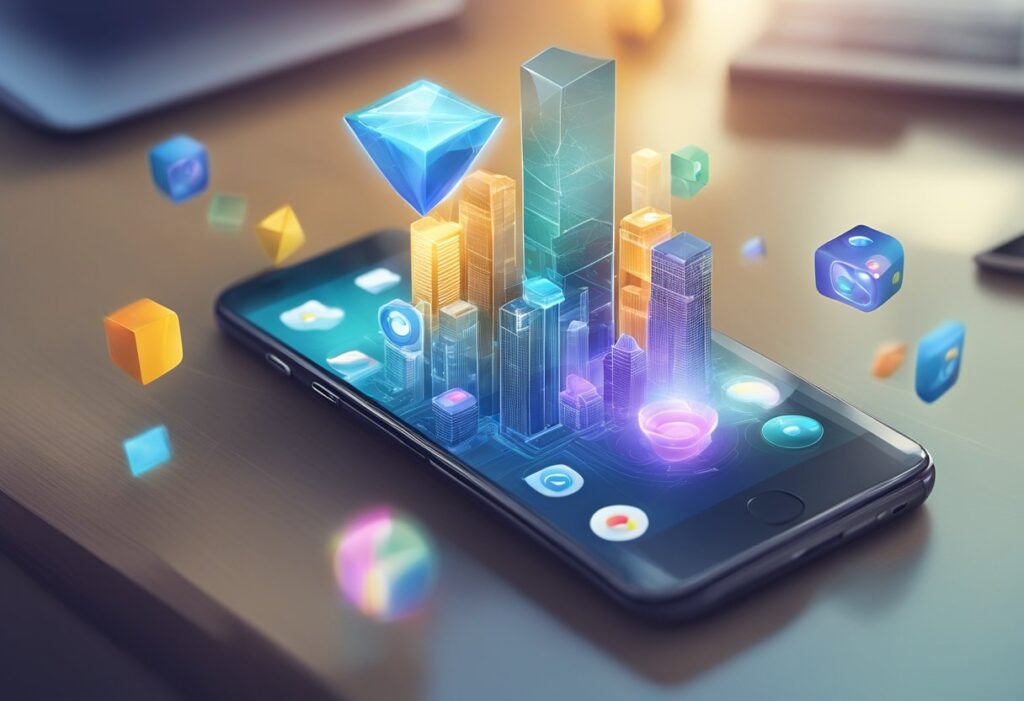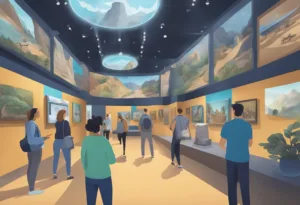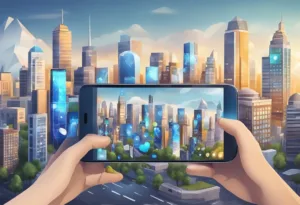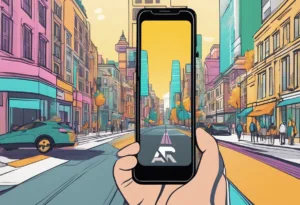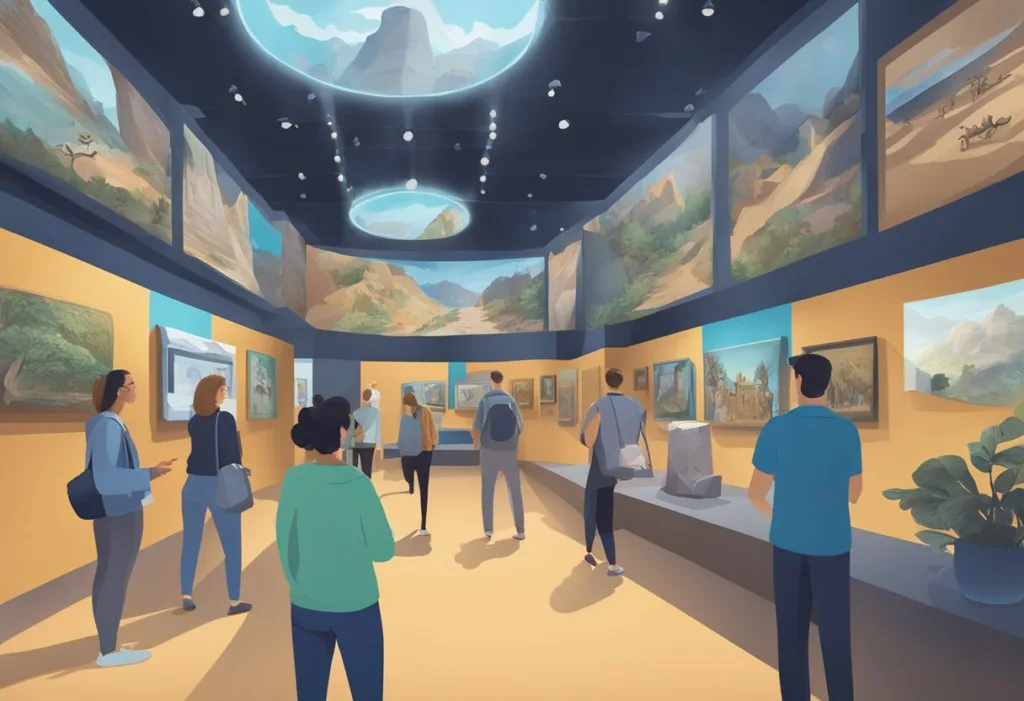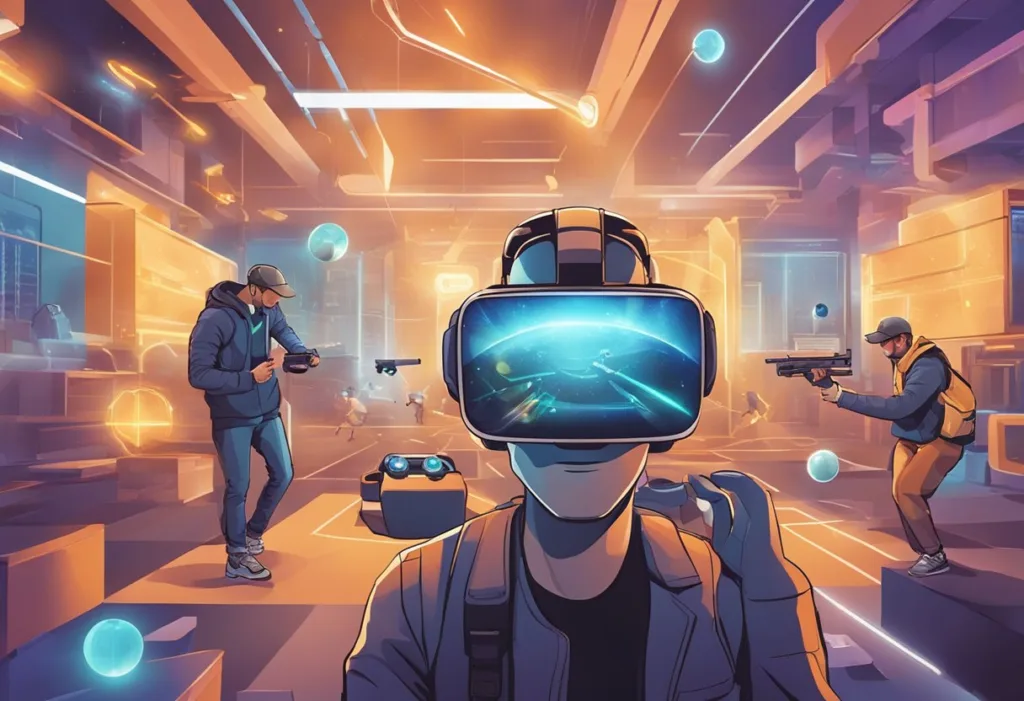Augmented reality (AR) is a technology that has been around for a while, but it has gained popularity in recent years. AR is a way of enhancing the real world with computer-generated information, making it more interactive and engaging. In this article, we will explore some examples of augmented reality and how it is being used in different industries.
One of the most popular examples of augmented reality is Snapchat. The app uses AR to impose filters on users’ faces, making it a fun and interactive way of communicating with friends. Another example of AR is in the healthcare industry, where it is being used to train medical professionals and provide better patient care. AR technology is also being used in the manufacturing industry to create more efficient and safer work environments.
In this article, we will delve into some specific examples of how AR is being used in different industries. We will explore how AR is being used in education, e-commerce, architecture, and more. By the end of this article, readers will have a better understanding of how AR is changing the way we interact with the world around us.
Understanding Augmented Reality
Core Technology
Augmented Reality (AR) is a technology that superimposes digital information onto the physical world, providing an interactive experience in real-time. AR technology uses computer vision algorithms to detect the real-world environment and overlays digital information onto it.
This technology allows users to interact with digital content in a physical environment, enhancing their experience. AR technology is powered by software that enables the computer to recognize and track objects in the real world, and then project digital information onto them. AR technology is used in various applications, including gaming, education, advertising, and healthcare.
AR vs VR: Distinctions
AR and Virtual Reality (VR) are often confused, but they are fundamentally different. While AR superimposes digital information onto the physical world, VR immerses the user in a completely virtual world. AR is more interactive and provides a more realistic experience as it overlays digital information onto the real world.
On the other hand, VR provides a more immersive experience, as it creates an entirely new environment for the user to interact with. AR is more commonly used in mobile devices, while VR requires specialized hardware. Both technologies have their unique use cases and provide different experiences to users.
Examples of augmented reality
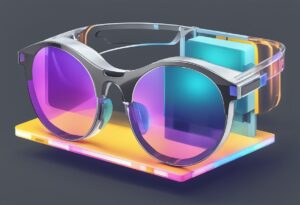
Augmented reality (AR) is a technology that overlays digital information onto the real world, providing an interactive and immersive experience. Here are 15 examples of AR applications that showcase the technology’s potential:
- IKEA Place AR APP
- Pokémon GO
- Snapchat filters
- Google Translate camera
- Yuka
- Surgeon Simulator
- Houzz
- Star Walk 2
- BMW iDrive Head-Up Display
- IKEA catalog
- Wayfair AR View
- Google Lens
- Meta Portal
- Duolingo
- Niantic Lightship
IKEA Place
IKEA Place is an AR app that lets users visualize how furniture would look in their homes. Users can select a piece of furniture from the IKEA catalog and place it in their room using their smartphone camera. The app also allows users to see how the furniture would look from different angles and in different lighting conditions.
Pokémon GO
Pokémon GO is a popular mobile game that uses AR to bring Pokémon to life in the real world. Players can catch, train, and battle Pokémon by exploring their surroundings and interacting with virtual objects.
Snapchat filters
Snapchat filters use AR to add fun and creative effects to users’ photos and videos. Filters can add anything from animal ears and noses to virtual makeup and accessories.
Google Translate camera
Google Translate’s camera feature uses AR to translate text in real-time. Users can point their camera at a sign or document in another language, and the app will overlay a translation onto the screen.
Yuka
Yuka is a food and cosmetic scanner app that uses AR to provide users with information about the products they are buying. Users can scan the barcode of a product, and the app will display information about its ingredients, nutritional value, and potential health risks.
Surgeon Simulator
Surgeon Simulator is a game that uses AR to simulate surgical procedures. Players can use virtual tools to perform surgeries on a patient and learn about anatomy and medical procedures.
Houzz
Houzz is an AR app that lets users visualize how furniture and decor would look in their homes. Users can select a piece of furniture or decor item from the Houzz catalog and place it in their room using their smartphone camera.
Star Walk 2
Star Walk 2 is an AR app that lets users explore the night sky. Users can point their smartphone camera at the sky, and the app will overlay constellations, stars, and other celestial objects onto the screen.
BMW iDrive Head-Up Display
BMW’s iDrive Head-Up Display uses AR to display important information on the car’s windshield. Drivers can see their speed, navigation directions, and other information without taking their eyes off the road.
IKEA catalog
The IKEA catalog uses AR to bring its products to life. Users can scan the catalog with their smartphone camera, and the app will overlay 3D models of the products onto the page.
Wayfair AR View
Wayfair’s AR View lets users visualize furniture and decor in their homes. Users can select a product from the Wayfair catalog and place it in their room using their smartphone camera.
Google Lens
Google Lens uses AR to provide users with information about the world around them. Users can point their smartphone camera at an object, and the app will display information about it, such as its name, history, and related products.
Meta Portal
The Meta Portal is an AR headset that lets users interact with virtual objects in the real world. Users can use hand gestures and voice commands to manipulate virtual objects and create immersive experiences.
Duolingo
Duolingo uses AR to teach users new languages. Users can point their smartphone camera at objects in their surroundings, and the app will display the object’s name and translation in the language they are learning.
Niantic Lightship
Niantic Lightship is an AR platform that allows developers to create location-based AR experiences. The platform uses real-world data to create immersive and interactive experiences for users.
Augmented Reality in Industries

Augmented Reality (AR) has revolutionized various industries by providing immersive and interactive experiences. AR technology has enabled businesses to improve their operations, enhance customer engagement, and increase their revenue. In this section, we will explore some of the industries that have adopted AR technology to improve their operations.
Retail Enhancements
AR technology has transformed the retail industry by providing customers with an immersive shopping experience. AR-enabled shopping applications allow customers to visualize products in their homes before making a purchase. AR technology has also enabled retailers to create virtual stores that customers can visit from anywhere in the world.
Revolutionizing Healthcare
AR technology has revolutionized the healthcare industry by providing doctors with a new way to visualize and treat patients. AR technology has enabled doctors to perform surgeries with greater precision and accuracy. AR technology has also provided patients with a new way to learn about their medical conditions and treatments.
Military Applications
AR technology has been adopted by the military to provide soldiers with a new way to visualize and navigate their environments. AR technology has enabled soldiers to identify potential threats and navigate through unfamiliar terrain. AR technology has also provided soldiers with a new way to train for combat situations.
Educational Innovations
AR technology has transformed the education industry by providing students with a new way to learn and interact with their environment. AR technology has enabled students to visualize complex concepts and interact with virtual objects. AR technology has also provided teachers with a new way to create engaging and interactive lessons.
Real Estate Visualization
AR technology has transformed the real estate industry by providing buyers with a new way to visualize properties. AR technology has enabled buyers to visualize properties in 3D and make informed decisions before making a purchase. AR technology has also provided real estate agents with a new way to showcase properties to potential buyers.
AR technology has transformed various industries by providing immersive and interactive experiences. AR technology has enabled businesses to improve their operations, enhance customer engagement, and increase their revenue. The adoption of AR technology is expected to increase in the future as businesses continue to realize its potential.
Consumer Applications of AR
Gaming and Entertainment
AR has revolutionized the gaming and entertainment industry by providing an immersive experience to the users. One of the most successful examples of AR gaming is Pokémon Go, which became a global phenomenon in 2016.
The game allowed users to capture virtual Pokémon characters in the real world using their smartphone cameras. AR technology has also been used in the development of games like Ingress, Harry Potter: Wizards Unite, and Minecraft Earth. AR technology has also been used in the development of virtual reality (VR) headsets, which have become popular among gamers.
Smartphones and Mobile Apps
AR has been integrated into smartphones and mobile apps, providing users with an interactive and engaging experience. Snapchat was one of the first social media platforms to introduce AR filters, which allowed users to add virtual elements to their photos and videos.
Since then, other social media platforms like Instagram and Facebook have also introduced AR filters. AR technology has also been used in mobile apps like IKEA Place, which allows users to place virtual furniture in their homes to see how it would look before making a purchase.
Social Media and Marketing
AR technology has also been used in social media and marketing to enhance engagement and provide a unique experience to the users. Brands like Coca-Cola and Pepsi have used AR technology to create interactive billboards that allowed users to play games or take photos with virtual elements.
AR technology has also been used in marketing campaigns like the IKEA Catalog, which allowed users to scan the pages of the catalog with their smartphone cameras to see how the furniture would look in their homes. AR technology has also been used in fashion shows to provide a unique and immersive experience to the attendees.
Business Solutions and AR
E-Commerce and Sales
Augmented Reality has revolutionized the way businesses interact with their customers. It has provided a new dimension to e-commerce and sales by allowing customers to visualize products in a real-world environment before making a purchase.
This has led to increased customer satisfaction and decreased product returns. For instance, Nike uses AR technology in its stores to allow customers to try out shoes virtually before buying them. This has helped the company to increase its sales and reduce product returns.
Training and Employee Development
AR technology has proven to be an effective tool for employee training and development. It allows employees to learn new skills and procedures in a simulated environment without the risks and costs associated with real-world training.
For instance, Boeing uses AR technology to train its employees on aircraft assembly. This has led to increased efficiency and reduced errors in the assembly process. AR technology also allows employees to learn at their own pace, which leads to better retention of knowledge.
Remote Assistance and Maintenance
AR technology has also proven to be an effective tool for remote assistance and maintenance. It allows experts to remotely assist technicians in the field by providing real-time guidance and instructions. This has led to faster problem resolution and reduced downtime.
For instance, General Electric uses AR technology to assist its field technicians in the maintenance of its wind turbines. This has led to increased efficiency and reduced maintenance costs.
AR technology has provided businesses with innovative solutions to various challenges in sales, e-commerce, training, employee development, remote assistance, and maintenance. Its potential is limitless, and as technology advances, we can expect to see even more applications of AR in the business world.
Innovative AR Experiences
Augmented reality has brought a new level of interactivity to marketing, tourism, and other industries. Here are some examples of innovative AR experiences that have captivated audiences.
Interactive Marketing Campaigns
AR has become a popular tool for experiential marketing campaigns. One example is the Pokemon Go game, which took the world by storm in 2016.
Another example is the U.S. Army’s use of AR technology to give soldiers improved situational awareness. These campaigns have been successful in creating engaging experiences for consumers and increasing brand awareness.
Virtual Try-Ons
AR has also revolutionized the way people try on products. L’Oreal’s ModiFace, for example, allows users to try on makeup virtually before making a purchase. IKEA’s Place Furniture App allows users to place virtual furniture in their homes to see how it would look before buying. These AR features have made shopping more interactive and convenient for consumers.
Augmented Reality in Tourism
AR has also found its way into the tourism industry. The augmented reality sandbox developed by UC Davis, for example, uses projection-based AR to create a more hands-on learning environment.
Another example is the augmented reality experiences provided by travel companies, such as showing travelers a prowling tiger, a meteor crashing, and an alien tentacle grabbing people off the street. These AR experiences have made travel more exciting and educational for tourists.
Frequently Asked Questions
What are the three main types of augmented reality technology?
There are three main types of augmented reality technology: marker-based AR, markerless AR, and projection-based AR. Marker-based AR uses a visual marker, such as a QR code, to trigger the AR experience.
Markerless AR uses computer vision to recognize and track objects in the real world. Projection-based AR projects digital images onto real-world surfaces, creating a mixed reality experience.
In what ways is augmented reality currently being used in various industries?
Augmented reality is being used in various industries, including retail, gaming, healthcare, and education. In retail, AR is used to enhance the shopping experience by allowing customers to virtually try on clothes or see how furniture would look in their home.
In gaming, AR is used to create immersive experiences like Pokemon Go. In healthcare, AR is used to assist with medical procedures and training. In education, AR is used to create interactive learning experiences.
How does augmented reality differ from virtual reality in practical applications?
Augmented reality differs from virtual reality in that it overlays digital information onto the real world, while virtual reality creates a completely immersive digital experience. In practical applications, augmented reality is often used to enhance real-world experiences, while virtual reality is used to create entirely new experiences.
Can you provide some examples of augmented reality in everyday life?
Augmented reality is used in everyday life in various ways, such as Snapchat filters, Google Maps’ AR navigation, and the IKEA Place app that allows users to see how furniture would look in their home. AR is also used in beauty apps like Sephora Virtual Artist, which allows users to try on makeup virtually.
What devices are commonly used for experiencing augmented reality?
Common devices used for experiencing augmented reality include smartphones, tablets, and smart glasses like Google Glass. Some AR experiences also require specialized hardware like motion sensors or depth-sensing cameras.
How is mixed reality different from augmented reality, and can you give examples?
Mixed reality is a type of augmented reality that blends digital and physical elements to create a seamless experience. Unlike traditional AR, mixed reality allows digital objects to interact with the real world in real-time. Examples of mixed reality include Microsoft’s HoloLens and Magic Leap, which allow users to interact with digital objects in a physical space.

